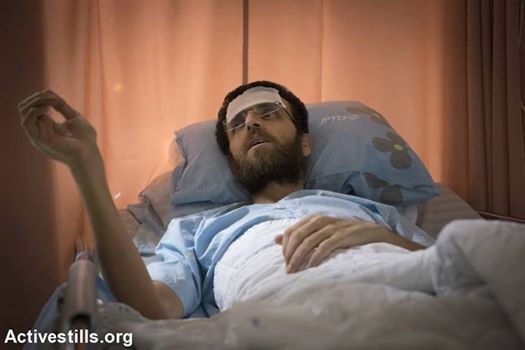Tag: International law
-
11th annual Bil’in demonstrations see protestors confront Israeli military at the apartheid wall
20th February 2015 | International Solidarity Movement, Al-Khalil team | Bi’lin, occupied Palestine On Friday the 20th of February, protesters took to the streets of Bil’in for the 11th consecutive year to demonstrate against the apartheid wall. Palestinians and international activists came together in solidarity to unite against the annexation wall which provides shelter for…
-
Palestinians aggressively harassed by Israeli forces on their way to prayer
19th February 2016 | International Solidarity Movement, al-Khalil team | Hebron, occupied Palestine On 19th February 2016, as Palestinians were on their way to the Friday prayer in Ibrahimi Mosque in occupied al-Khalil (Hebron), Israeli forces stopped, delayed, body-searched and harassed them. Like every Friday, Palestinian men, women and children made their way through the…
-
Sit-in in solidarity with Muhammad Al-Qiq at Birzeit University
19th February 2016 |Birzeit University | Birzeit, Ramallah, occupied Palestine Birzeit University administration, Workers’ Union, and students organized a sit-in in solidarity with its former student and head of students council, Journalist Muhammad Al-Qiq, who has been on hunger strike since November 25 against his imprisonment without charges or trial. Protestors called for immediate and…



